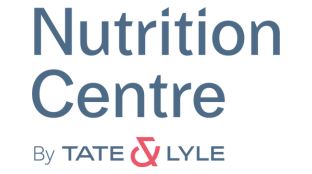Low carb dieting is growing in popularity all over the world. But what does a low carb diet actually look like, what are the health benefits or side effects, and how can food and drink manufacturers respond to increasing demand for low carb products and related nutrition needs?
Low carb – the diet
There are various types of low carb diet – such as the ketogenic (keto) and Atkins diets – with each one prescribing different amounts of carbohydrate and/or restricting and encouraging different food groups.
A typical keto diet looks like this:
The below gives an overview of how the typical carbohydrate, protein and fat percentages in a very low carbohydrate keto diet compares with the Atkins diet and with general recommendations.
| Dietary Pattern | ||||
|---|---|---|---|---|
| Macronutrient* | Keto (VLCKD) | Atkins | Dietary Guidlines for Americans |
WHO and FAQ |
| Carbohydrate | 5% | Depends on the phase: 10% or more |
45-65% | 50%** |
| Protein | 20% | 25% | 10-35% | 20% |
| Fat | 75% | 65% | 20-35% | Less than 30% |
*Represents the percentage of calories suggested from each micronutrient
**The WHO recommends detail should be given in regards to the type of carbohydrate. Of the 50%, free sugars should make up less than 10% or reduce to less than 5% for additional health benefits.
Low carb - the science
A keto diet should always be undertaken with care and guidance from a healthcare provider. The keto diet was originally recommended for those with epilepsy, as well as for those with certain rare metabolic disorders. Clinicians also recognise the benefit of a low carb diet for those with diabetes or trying to lose weight. Why is this?
The reason is related to the fact that dietary carbohydrates raise serum glucose and insulin levels in the body. For those with prediabetes or type 2 diabetes, they will want to reduce carbohydrates as they already have higher levels of serum insulin and glucose.
Insulin stimulates excess calories to be stored as fat. So by restricting carbohydrates, blood insulin levels come down, and the body begins burning its fat stores for energy, resulting in weight loss, but only if there is also reduced caloric intake.
In addition, some people on a low carb diet report feeling fuller for longer and therefore eat fewer calories overall, which also contributes to weight loss.
There are conflicting views on whether a low carb or low fat diet is more effective. Ultimately, the key to losing weight is to achieve a negative energy balance, which can be possible with both diets.
Low carb - the importance of caution
Low carbohydrate diets, especially ones as restrictive as the ketogenic diet, are associated with some side effects, such as constipation, bad breath and headaches. These symptoms are usually the result of dehydration, which is common among low carb dieters, particularly in the first few weeks, and is why anyone undertaking a low carb diet should ensure they drink plenty of fluids. Constipation can also be a side effect of the lack of fibre in a low carb diet, but this, too, can be alleviated with products such as PROMITOR® Soluble Fibre.
It is also important to maintain variety in the diet – so caution should be paid to “blacklisting” certain nutrients, including carbohydrates. Recent research has shown the importance of nutrient diversity for the gut microbiota and some evidence suggests that a long-term low carb diet can have a negative impact on the microbiota.
A diet rich in a range of nutrients, including fibre (which those on a low carb diet may struggle to get enough of), has also been shown to have an impact on mood through interactions with the gut-brain-axis, although more research is needed.
Undertaking a low carb diet may therefore be an effective option for some but should always be undertaken with a healthcare professional.
Low carb - the market
Research shows that many consumers attribute weight gain to carbs and sugar and are increasingly looking for ways to lower their consumption of one or both. While very low carb diets should be undertaken with caution, improving the quality of carbs people eat could help tackle the growing global diabetes and obesity crises.
Food and beverage manufacturers can support this by improving the nutritional profile of their products using soluble fibres or no/low-calorie sweeteners. Many are already doing so. For example, according to Mintel GNPD, the number of product launches in Europe with a reduced sugar or carbohydrate claim grew by 12% between 2015 and 2019. Globally, launches of meal replacement drinks with similar claims grew by 33% in the same period, while launches of low sugar/carb fruit snacks and cereal bars increased by 15% and 14%, respectively.
This looks set to be a market that will continue to grow. Tate & Lyle has a range of fibres and sweeteners that can help food and beverage manufacturers produce lower calorie, high fibre options for those wanting to lose weight as well as to support those undertaking a low carb diet under the guidance of a healthcare provider.
Learn more about how we partner with our customers to improve the nutritional profile of their products here.

Nutrition plays a key role in consumers’ lives
We address the health and nutritional needs of your consumers using our science-based innovative ingredient solutions. Discover how in our Nutrition Centre...

